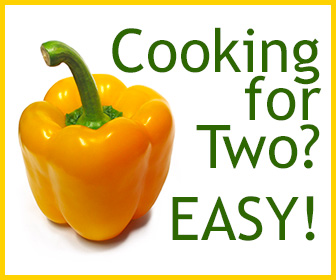Take-out vs. made-from-scratch: weighing and pricing the options
We've been saying for years that cooking at home is cheaper and better for you than eating fast food, using products like Hamburger Helper®, or even getting take-out. That's one of the reasons Health meets Food exists: to get people back into the kitchen, cooking their own food and improving their diets, by offering free cooking classes that include how to plan your weekly meals - crucial to cost-effective cooking.
A few years ago we did a head to head comparison: I compared the ingredient cost and caloric information of a box of Hamburger Helper with the ingredient cost and caloric information of a recipe designed to take about the same amount of time to cook, but with better nutrition: Quick Beef Stroganoff with Noodles. While we looked at time, finding that it would take about 5 minutes longer to make our recipe as opposed to using the boxed version (and my recipe has a larger portion and far better nutrition), we didn't take into account the full cost of homemade vs. store-bought in the sense of quantifying the time to make the dish.
And in talking to our community class participants, we know that time ranks near cost in the barriers to eating healthy. The perception is that it is faster (and cheaper) to go through the drive-through or pop into the grocery store to pick up a ready-made meal than it is to stand in the kitchen and cook.
Researchers in New Zealand sought to quantify the cost of eating more healthfully, taking into account the time to prepare the meal, and published the results in the journal Public Health Nutrition last year (2017;20(13):2269-2276)
The authors identified popular takeaway meals from the 2008-2009 Adult NZ Nutrition Survey and identified popular fast-food outlets from similar data. Three fast-food restaurants: McDonald's, Domino's, and KFC, were selected and nutrition information for their meals was determined by using the publicly available information on the companies' respective websites.
Common take-away meals, which for New Zealand were fish and chips, butter chicken, and beef chow mein, had their nutrition information determined by a random sampling of takeaway outlets in three neighborhoods in Auckland with low, medium, and higher economic classes.
"Meals" were defined as including specific minimum amounts of non-starchy vegetables, minimum amounts of animal protein (either land animal or non-land-animal protein), less than 24 grams of saturated fat, and less than 3,600 milligrams of sodium for an amount of food appropriate for a family of four: 2 adults and 2 children.
Not only did the authors look at take-out versus home made from scratch, they also compared the cost and time to prepare of what they termed "home-assembled" meals: those using, for example, pre-prepared sauces (like from a jar); frozen or pre-breaded chicken or fish; frozen (and thus baked) French fries; or frozen beef patties.
When calculating the cost of each ingredient (or pre-made item), the authors chose the cheapest available item, including generic brands, and sourced them from major chain supermarkets in the same areas as those selected for the fast food restaurants.
They also calculated the time involved in each meal, whether it be waiting time (time spent waiting to pick up the completed order) or active cooking time, and included that time spent as part of the cost of the meal at New Zealand minimum wage prices (the minimum wage being similar to the wage of a food preparer).
It should be no surprise that the home-prepared meals were healthier, as they were designed to contain more vegetables and less saturated fat and sodium than their comparable take-out or fast food equivalents. The cost of take-away meals was significantly higher than the cost of comparable meals that were made from scratch when you look at the cost of ingredients, but when you include the time factor, home-assembled meals (ones made with, say, frozen breaded chicken, bottled sauces, and frozen or packaged rice or fries), were the cheapest, although the made-from-scratch meals were still healthiest.
What this means for you
The authors note that the made-from-scratch meals are not better from a time standpoint than take-away as they "required at least 45% more preparation time than the other meals," but that home-assembled meals "are 15-48% cheaper [than takeaway], have a similar preparation/waiting time, and can provide a healthy meal if pre-prepared ingredients lower in saturated fat and [sodium] are chosen."
Yet this study still compares single meals with single meals. In our classes at Goldring we teach our students how to plan their entire week's worth of meals, cross-utilizing ingredients, re-using leftovers, and even planning for snacks.
First posted: May 23, 2018




